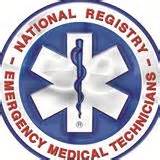
Image: nremt.org
A mental health professional who previously worked with the Children’s National Medical Center and the Psychiatric Institute of Washington, Todd Belok currently serves as a mental health technician at Episcopal Hospital Public. As a registered EMT, Todd Belok maintains membership in organizations such as the National Registration of Emergency Medical Technicians (NREMT).
Established in 1970 in response to President Lyndon Johnson’s recommendation for a national certification agency to provide uniform standards for emergency personnel, the NREMT continues to assist Emergency Medical Services (EMS) professionals. In many cases, states require that EMS-certified professionals also maintain certification with the NREMT, strengthening the relationship between the two.
EMS professionals include the dispatchers who answer calls to 911 and help identify the callers’ needs prior to sending out trained first responders, paramedics, or other personnel. These professionals may belong to local ambulance services, fire departments, or government programs. In addition, they may volunteer or receive payment for their services. Regardless of the status of EMS personnel, however, NREMT advocates for every citizen to support them in their work. The organization also encourages those who can to get involved in EMS.
